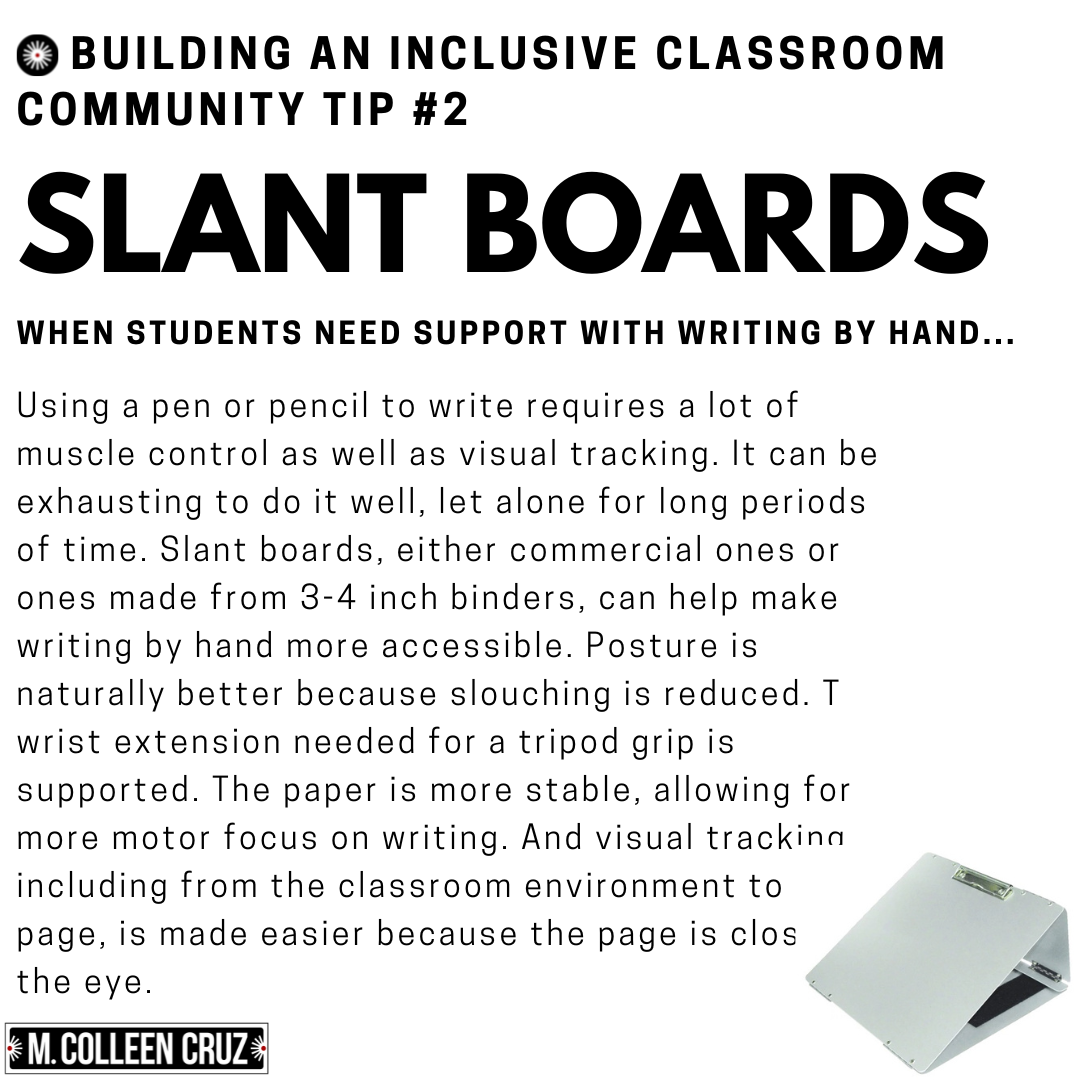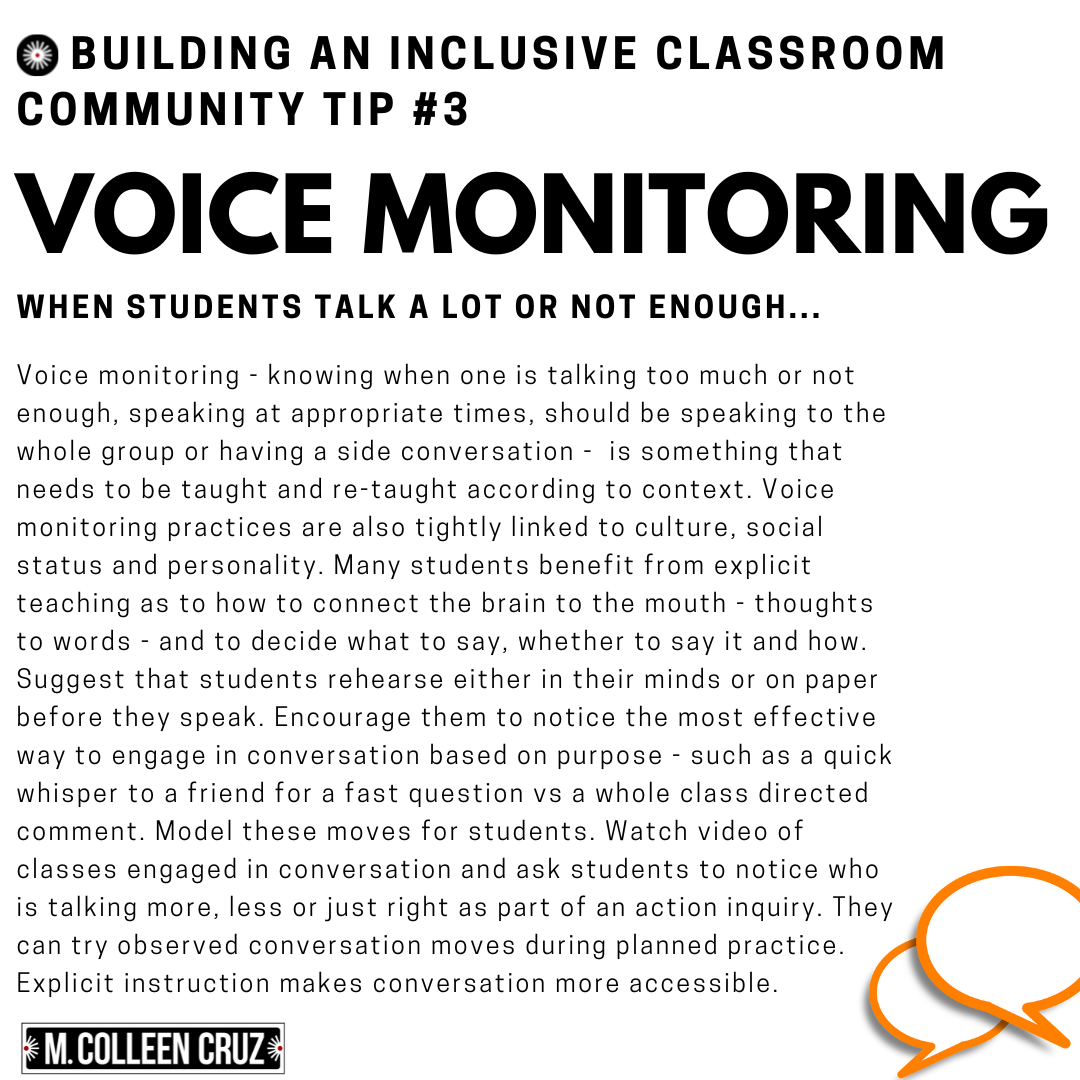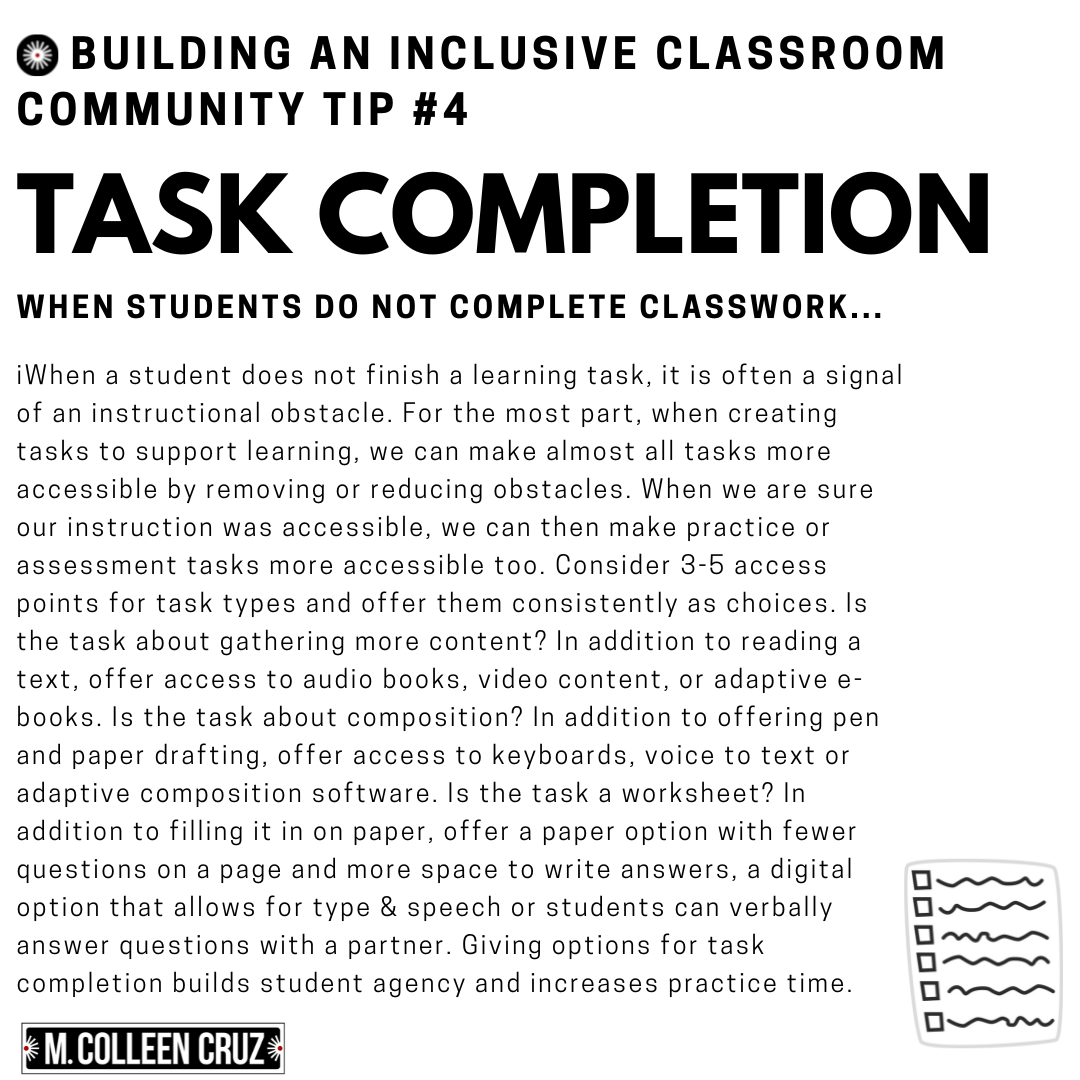Building an Inclusive Classroom Community (sometimes known as ‘classroom management’)
When I think about establishing classroom norms and building a welcoming and productive classroom community, what some call ‘classroom management’, I often think of get-togethers like BBQs and parties I have hosted. It’s two parts planning and one part responding.
When I plan a get-together, it’s important to gather everything I can know about the people who will inhabit the space and create the conditions I believe will work for them. I want to anticipate any obstacles that could cause difficulty and remove or reduce those obstacles. And I want to increase the opportunities for feelings of joy, care and possibility. All those things hold true when I am thinking of building an inclusive classroom community too. And in neither situation do I see the setting-up and orchestrating of the environment and people as ‘managing’.
But there is one very important way that get-togethers are different than classrooms. In a get-together, the people we have gathered are our guests. We are gathered together for socializing and fun. If someone is acting in a way that could be viewed as disruptive, I will address it. But, in a classroom I would also view any disruptions as opportunities to teach. That’s because I believe that students’ default position is to learn. If students are not learning, there is usually some sort of obstacle in the way. Whether this an environmental, systemic or instructional obstacle, I want to do whatever I can to remove or reduce that obstacle. Sometimes this can be done preemptively. Other times it must be done responsively. But, no matter what, when I embrace the identity of teacher and instead of manager, I also embrace that my first response to community difficulty should be to instruct.
One of the most intriguing things to me about the way school often goes, and something I wrote about extensively in Risk. Fail. Rise. is the way schools often have a lot of expectation of and patience for academic mistakes but a limited supply for behavioral mistakes. Even though, the two are often interconnected and both are often remedied through instruction. I believe so much of what keeps our warm, joyful and productive classrooms from being that way all the time is that we need to prioritize using what we know about good academic instruction in the building and maintenance of our inclusive classroom communities:
1. Know your students and anticipate their needs
2. Design community-focused accessible environments, instructional moves and resources
3. Teach students a range of strategies
Holding those ideas in mind I have spent time studying various areas of school that can lead to disharmony in the classroom and frustration for educators. What it seems to come down to is that there are a few hot spots we can expect – places where some proactive work would be beneficial, as well as having some back pocket tools at the ready. These are:
· Bodies in seats
· Recording by hand
· Noise levels
· Completing work
· Humiliation avoidance
Working with many brilliant people over the years, students, teachers and service providers, I believe by looking into these categories and studying one area within a category, we can apply those same three steps to come up with practical ideas that can be tailored to each individual community’s needs. I shared some of what I have tried over the year on various social media platforms, and I am sharing it here as well. But I don’t think these particular areas are the only ones, or that the topics I tackled are going to be that important for everyone.
What I do know, is that if we focus on building inclusive classroom communities, one where every member is welcomed, valued and accommodated for, as well as taught, we are freed up to make more space for the kind of classrooms we want for all our students and ourselves.






